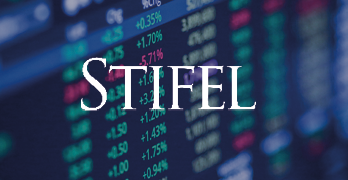BAI Index June 2023: O’Say Can You See: Air Cargo Rates Bouncing Along the Bottom; Where do They Go From Here?

As fireworks light up the sky across the United States, there is not much celebrating for air cargo service providers as rates remain well below pandemic-era levels. On a year-over-year (y/y) basis, cost per kilo in June fell 40% and 44% from Hong Kong to Europe (BAI31) and the US (BAI 32), respectively, and 59% and 49% from Shanghai to Europe (BAI81) and the US (BAI 82), respectively.
Big declines are set to continue against elevated comparables that likely will not ease until the end of the 2023 fourth quarter. On a fuel-adjusted basis, we estimate that most major lanes are close to parity with 2018-19 levels, so we are basically back where we started.
Even on the West-bound transatlantic (Frankfurt to US – BAI 22), rates fell 42% y/y in the month of June. Big declines are set to continue against elevated comparables that likely will not ease until the end of the 2023 fourth quarter. On a fuel-adjusted basis, we estimate that most major lanes are close to parity with 2018-19 levels, so we are basically back where we started.
The base case is that we are close to a bottom on the demand side, so even if a recovery will be long, drawn-out, and arduous, we shouldn’t see major deterioration in volumes from here.
The million dollar question is, of course, where are we headed from here? The bull thesis is that demand will recover as we move through the end of the year and may even tighten considerably if there is a better-than-expected peak season after the absence of one last year. The base case is that we are close to a bottom on the demand side, so even if a recovery will be long, drawn-out, and arduous, we shouldn’t see major deterioration in volumes from here. Under this scenario, we do not expect any major restocking to begin in earnest until the end of the year, if not later. From a supply standpoint, under this scenario, we believe that over capacity - indeed the return of capacity - continues through the year, especially out of Asia, which, together with decline fuel prices, will continue to pressure cargo rate indices. The bear case leaves plenty of room for creative interpretation, but includes some form of demand pullback, which would continue to downward acceleration in rates, if and when one were to unfold.
Right now, at least from a rate standpoint, we believe signs point toward our base case scenario. Cargo rates are sequentially flattish, with Asia to North America reading down 2% and less than 1% in June versus May from Hong Kong (BAI32) and Shanghai (BAI82), respectively. Asia to Europe was similarly flattish from June against May, declining 0.5% and 3.6% from Hong Kong and Shanghai, respectively. Transatlantic rates had been holding up better early in the year, but has now been posting steeper sequential declines in recent months. In June, rates were down about 9% from May. Sequential declines intra-Asia were even more pronounced, falling nearly 15% y/y (Singapore to SE Asia; BAI 63).
Looking further afield and through the cycle, we believe air freight rates could moderate to below pandemic levels, at least on an inflation-adjusted basis. Some areas, like e-commerce, should continue to see secular growth, but certain trends look to us to de-emphasise expensive, transcontinental share gain - trends like de-globalisation, nearshoring, and rising geopolitical tensions, along with a paradigm under which a significant portion of supply decisions are governed by a completely different set of (passenger) supply/demand dynamics. Therefore, from a rate standpoint at least, we think the future is incrementally harder for purveyors of air cargo services.
About Bruce Chan, Director and Senior Research Analyst covering Global Logistics and Future Mobility, Stifel
Bruce Chan joined Stifel in 2010. Based out of the Miami office, Mr. Chan is a Director and Senior Research Analyst covering Global Logistics and Future Mobility.
Bruce Chan can be reached at chanb@stifel.com. Opinions expressed are subject to change without notice and do not take into account the particular investment objectives, financial situation or needs of individual investors. For more information and current disclosures for the companies discussed herein, please go to the research page at www.stifel.com.
©2023 by J. Bruce Chan.